You may have visited my blog expecting the final installment of Martyr’s Leica’s vs. Eckman’s Copies and a review of the Canon IVsb. However, as this isn’t a paid site and my inspiration/motivation is a wavering mess, I’ve decided to postpone the IVsb blog another week (hopefully). Instead, I humbly submit, for your enjoyment and/or enlightenment, my thoughts on another Leica competitor (or companion), the Voigtländer Bessa R2.
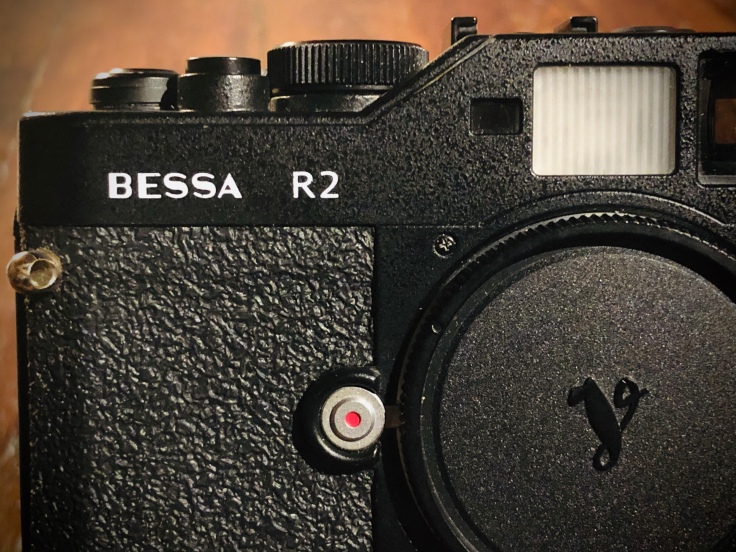
As much as the Voigtländer Bessa R2 has let me down since I bought it in 2004, there is something that keeps me coming back to it. And for certain applications, I would still be happy to recommend it, though for others, its shortcomings are unacceptable.
The Cosina Voigtländer Bessa 35mm rangefinder line of cameras share many basic characteristics so I will discuss the line as a whole here, with emphasis on the R2 that I happen to have owned/used for 16 years.
I also want to get it out of the way up front that this article is going to have a lot of personal opinion/observation built into it.I am not claiming fully empirical facts on every conclusion drawn here. It’s just my personal view. And if you disagree, I’m down for discussion.
With all that out of the way, let’s get started.
If you didn’t already know, the Voigtländer Bessa series are the most recent, and important, evolution of the Cosina CT-1 that hailed from the 1980’s. Unlike other manufacturers who kept reinventing the wheel, Cosina built the exact same internal mechanics, and many exterior components into dozens of models of cameras. The vast majority were budget model cameras for other manufacturers. The most famous of these is the much maligned but incredibly successful Nikon FM10.
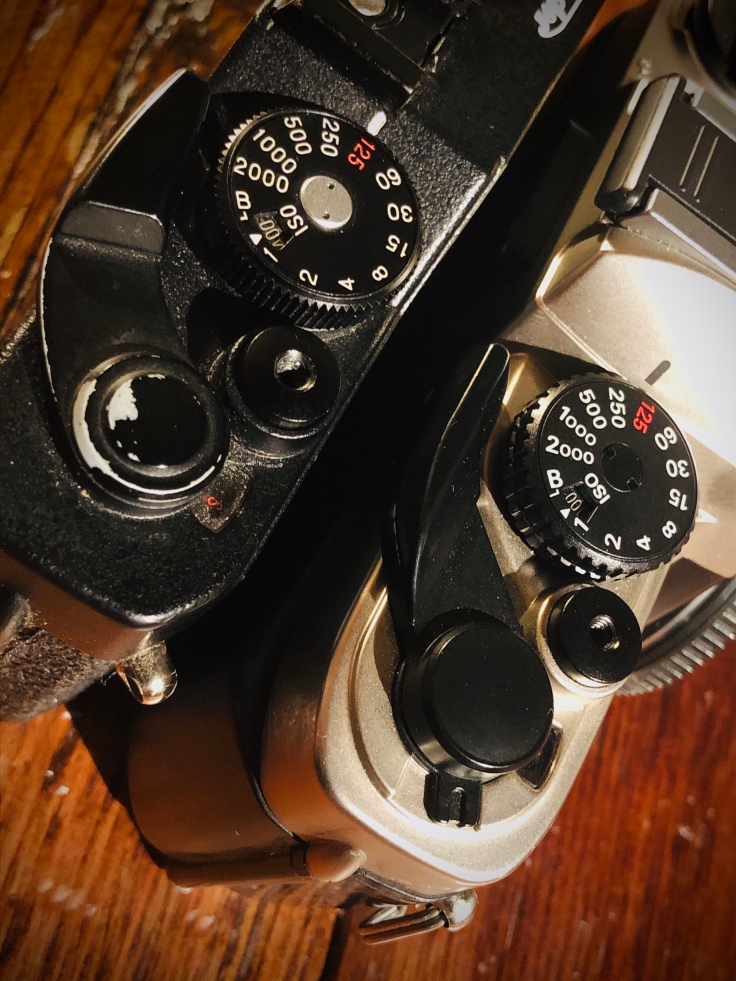
Side by side, you can see that the Nikon FM10 DNA is fully present in the Bessa R2 despite one being a fairly costly advanced photographer rangefinder and one a cheap student level SLR. Cosina Voigtländer made a bold move by turning their successful, albeit, clandestine SLR line into a rangefinder line. I really think that they, thanks to Stephan Gandy’s website, ignited a rangefinder renaissance in the early 2000’s which, as I see it, resulted not only in the popular use of CV Bessa’s but also greater interest in vintage Canon and, of course Leica, as well as pretty much all rangefinder cameras as a whole. So, if for no other reason, the Bessa series can be appreciated for making rangefinders credible again.
And with good reason.
Since the first Leica rangefinders launched in the 1930’s, other camera makers have been trying to build cheaper, better versions. Canon is probably the first to make true improvements on the early Barnack Leica’s (article on the IVsb to come!). But as the Leica M series was rolled out, Canon’s designs started serving amateur market desires, to the point where Leica was again left to their own devices as the best and only choice in serious rangefinder photography. And this was generally the case until Cosina decided to build not just one Leica killer but a whole goddamn military front of attack.
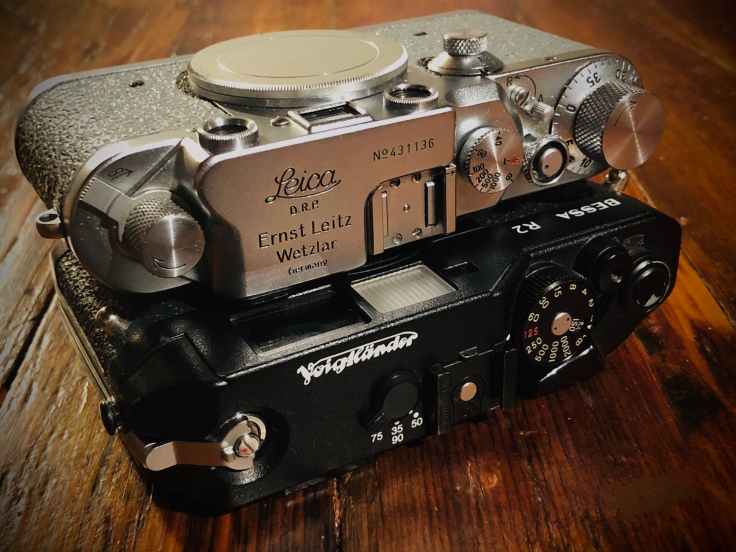
I’m not going to get into the nuts and bolts of every Bessa model that was made but the number of variants of the same camera/concept are nothing short of astounding. And with each year, Voigtländer seemed to listen to the market and react accordingly. This resulted in some very fine designs before they wrapped up camera production in 2015. What is left to us today is a good spectrum of Leica alternatives on the used market.
I started, and ended with the Bessa R2 because my buddy owned this very camera and it was the first “nice” RF I’d ever handled. The R2 was my gateway into interchangeable lens rangefinders. It was a first love in many ways. I was seduced by the big, bright, crisp viewfinder and the body’s shape and feel. In some ways, I enjoy the feel of the metal Bessa bodies more than my Leica’s and certainly any SLR.
The R2 is basically a Cosina CT-1. But the mirrorbox and prism have been replaced with a short baselength rangefinder and cheap plastic outer body replaced with magnesium alloy. The shutter, shutter housing and all the controls, down to the film rewind button are nearly identical to previous models.
It’s rather alarming to me personally, that all the cheap, re-purposed mechanics in an FM10 can be covered in a metal body and feel so much nicer than previous incarnations. But to be perfectly objective about this, while the CT-1 mechanics are cheap and simple, they were refined and deeply understood after decades of use by Cosina by the time that the first Bessa R rolled off the assembly line in Japan. This probably encouraged reasonable precision from an otherwise humble rig. Hirofumi Kobayashi, the CEO of Cosina Voigtländer, clearly did his homework on what rangefinder shooters wanted.
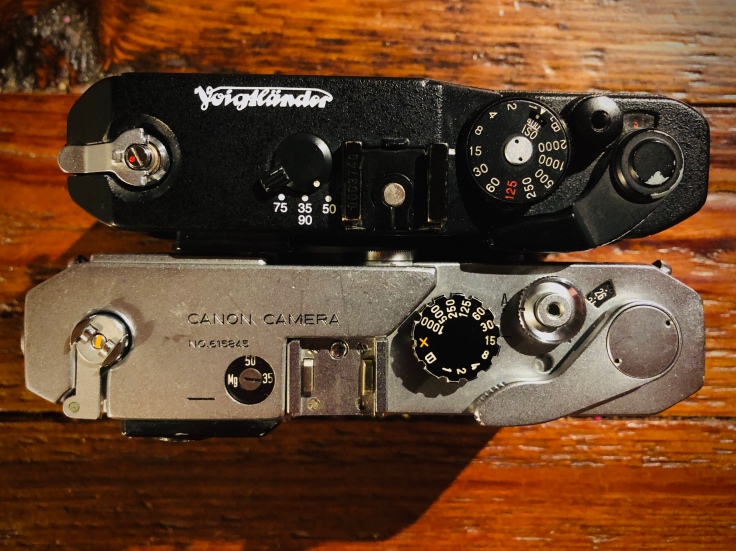
The Bessa R2, and many models of the series take some major cues from 1960’s Canon RF’s such as the angled sides, manual frame selector switch, unique, locking rewind lever and of course, conventional hinged door film loading.
Cosina took some of the nicest features from their SLR variants too; such as the rear palm grip, film reminder window, three LED > 0 < meter display and 1/2000th top shutter speed.
The shutter speed, shutter release and film advance controls are clustered very tightly as with their SLR’s and of course have ancient Leica/Nikon origins which make them about as perfectly placed in as little space as possible. What’s interesting is that where this cluster is almost too small/tight on the SLR configuration due to conflict with the thumb and viewfinder, the ergonomics are perfect with the rangefinder configuration.
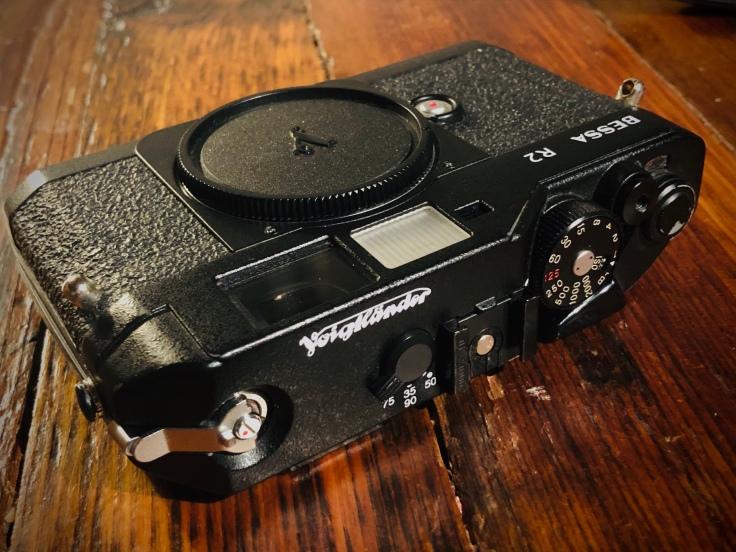
The Bessa is not as physically long as a Leica M which makes all the above haptics very enjoyable and among the main reason I keep coming back to this camera. But it’s also the reason I left the Voigtländer universe for Leica. You see, as I discussed in my Effective Baselength blog, this limited amount of real estate results in a less accurate rangefinder, that is incapable of focusing fast/long lenses; a basic conundrum that has always haunted rangefinder cameras; the smaller you make the camera, the less accurately it can focus, unless you include a magnifying rangefinder. Which, sadly, Voigtländer only did with the T and no other model. Voigtländer placed higher value on a bright combined view/rangefinder and a full range of built-in framelines than EBL.
If your favorite lenses are slower/wider ones, then the R2 is fantastic but if you are like me and primarily use a 90/2 and 50/1.5, this camera is a miserable buy for the money. But Canon was very similar.
In fact, Voigtländer shadowed Canon so closely that I think they fell into the same trap of catering to uneducated consumers instead of building the best cameras possible. Cosina Voigtländer’s smart, high magnification, yet misunderstood Bessa T was a bit of a market failure and not revisited after only three years of availability, much like the Canon VIL and VIT were only made for a few years and are often forgotten about today, despite these cameras having EBL’s longer than many Leica’s. Instead, CV’s concentration fell on producing super fast glass like the 50mm 1.1 Nokton and low EBL cameras that aren’t capable of focusing it, much like the popular Canon 7 and their famous 50mm 0.95.
Really, the closest thing Voigtländer did to building a true Leica competitor for the professional photographer was their Zeiss Ikon ZM which proved it was possible for Cosina to build an RF with a huge EBL AND their famously bright finder. Unfortunately, the Zeiss was only available with an electronic shutter, which, I think kept many Leica shooters, myself included, from converting.
But anyway, the R2. I have made peace with it’s shortcomings. Nowadays I use it nearly exclusively with my 15/4.5 Heliar. This isn’t an ideal rig because it really renders the built-in viewfinder pointless. If I were to go back in time, I’d have bought the T and made full use of all LTM and M lenses available. But I have not replaced my R2 with a T because I’ve got a bit of an emotional connection to the R2 at this point and hey, it’s easier to just hold onto and use something you already have then start all over again with a used camera.
Additionally, I became reluctant to buy any more Voigtländer bodies after using the R2 for about two years. That’s how little time it took before I began having problems with the camera.
The shutter has locked up on me during shoots on a few occasions, apparently because the camera can’t handle rapid firing, despite it’s compatibility with another fantastically envisioned Voigtländer product, the T-Winder.
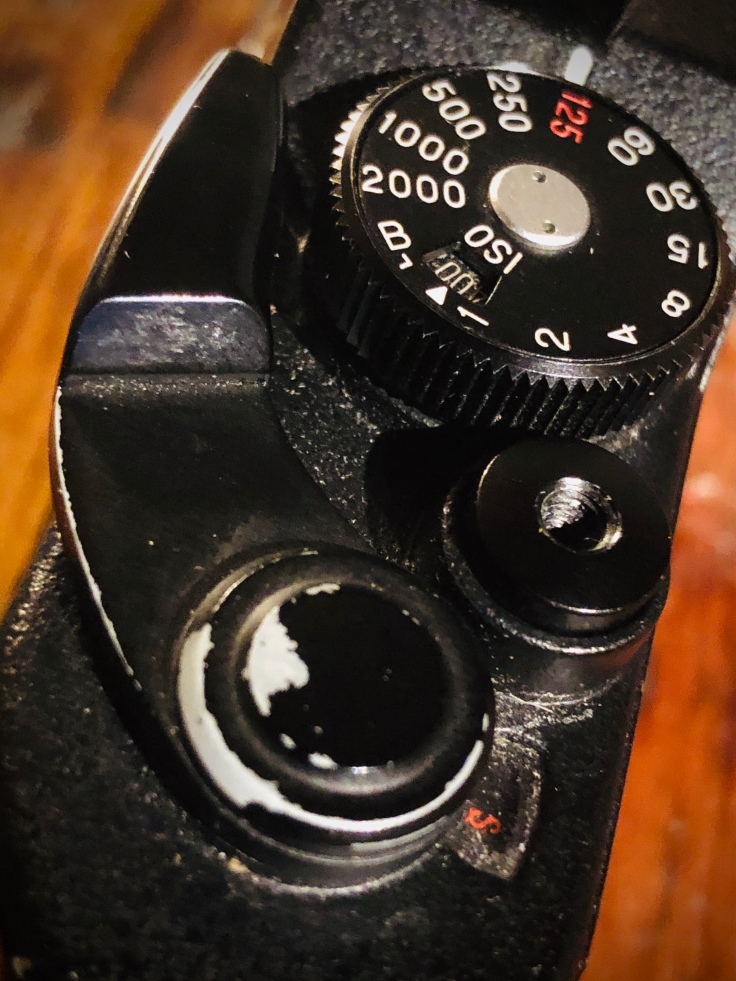
Within the first year or so I found that regular use was causing fairly substantial paint loss. This isn’t a big deal but it does highlight the lack of quality or care put into the Bessa’s attractive crinkle finish black enamel. I can only imagine it will resemble one of Paul Fusco’s Leica’s before long, which, isn’t really a bad thing!
The meter has always been finicky. I don’t like that you can see when the meter is lit up through the fresnel window on the opposite side of the camera. This means that your subject absolutely knows when you are about to take a photograph. Terrible for candid work. People argue about how loud the shutter is on these things but to me, the bright red LED announcing to everyone “HEY! I’M ABOUT TO TAKE YOUR PHOTO!” is a great deal worse, and a stupid issue I’ve not seen or heard of on any other camera in history. The meter is also not terribly reliable in colder weather and loses responsiveness as the battery drains. What I mean by this is that the batteries have to be above 1.5 volts else the LED’s react to aperture changes rather slowly, if at all. It’s as if the meter was designed to work at 1.6 or 1.7 volts only. It also stops working correctly below about 1/15th of a second, the way old K1000’s and similar do.
Finally, the most expensive issue I’ve had (if you don’t count having to stop shoots and wait for the shutter to work again) was when, after about 4 or 5 years of use, the rubber gripping or leatherette on most cameras, began falling off. This forced me to replace it with black Grip Tac from CameraLeather.com. The replacement is actually a much tighter fitting, better adhering and better feeling product than the original, which had a terrible spongy feel to it. It’s rather unfortunate though, that the palm hump on the rear door wore down and was one of the panels that fell off. I enjoyed how that fit into my hand but, what good is it if it only lasts a few years?
Between all the aforementioned issues and total inability to focus my 50mm 1.5 Nokton at full aperture, I chose to buy a Leica M6 TTL and washed my hands of all the annoyances of cheap cameras. Instead, I moved onto all the annoyances of expensive ones!
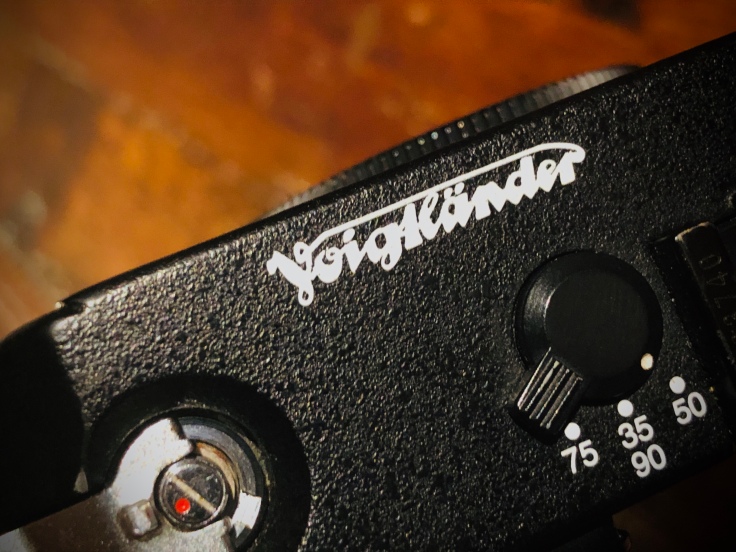
And so I still love my worn and tattered little Bessa R2. It’s fun and reliable enough as a back-up to an indestructible Leica. Doing duty as a second or casual use body is probably what it’s best suited for. In doing so, one can appreciate all the smart, history-tested design that accumulated in the Bessa series, without putting too much pressure on the camera to actually work correctly. And I do have to say, each issue has been something I can live with or resolve fairly easily. I still have a 100% functional Leica mount rangefinder that I think I only paid about $400 for but would cost $600-$800 to replace today. And of course, the main reason to use a Leica mount body, for many, is to gain access to the Leitz lens legacy.
If you’re looking into picking up a Voigtländer Bessa series camera, as I’ve said elsewhere, just be sure to decide what lenses you want to use first and then choose a body with the right amount of magnification and appropriate framelines for those length and speed lenses. The R4M and R4A are probably the ultimate wide angle platforms, The R3A and R3M are great all around bodies and if you want a camera that can shoot any lens, the Bessa T is my personal choice. The R and R2 are probably best viewed as a budget general use Bessa’s. But hey, nothing wrong with that!
Thanks for reading and happy shooting!
Follow, Favorite, Like, Add, Insult, Contact Johnny Martyr
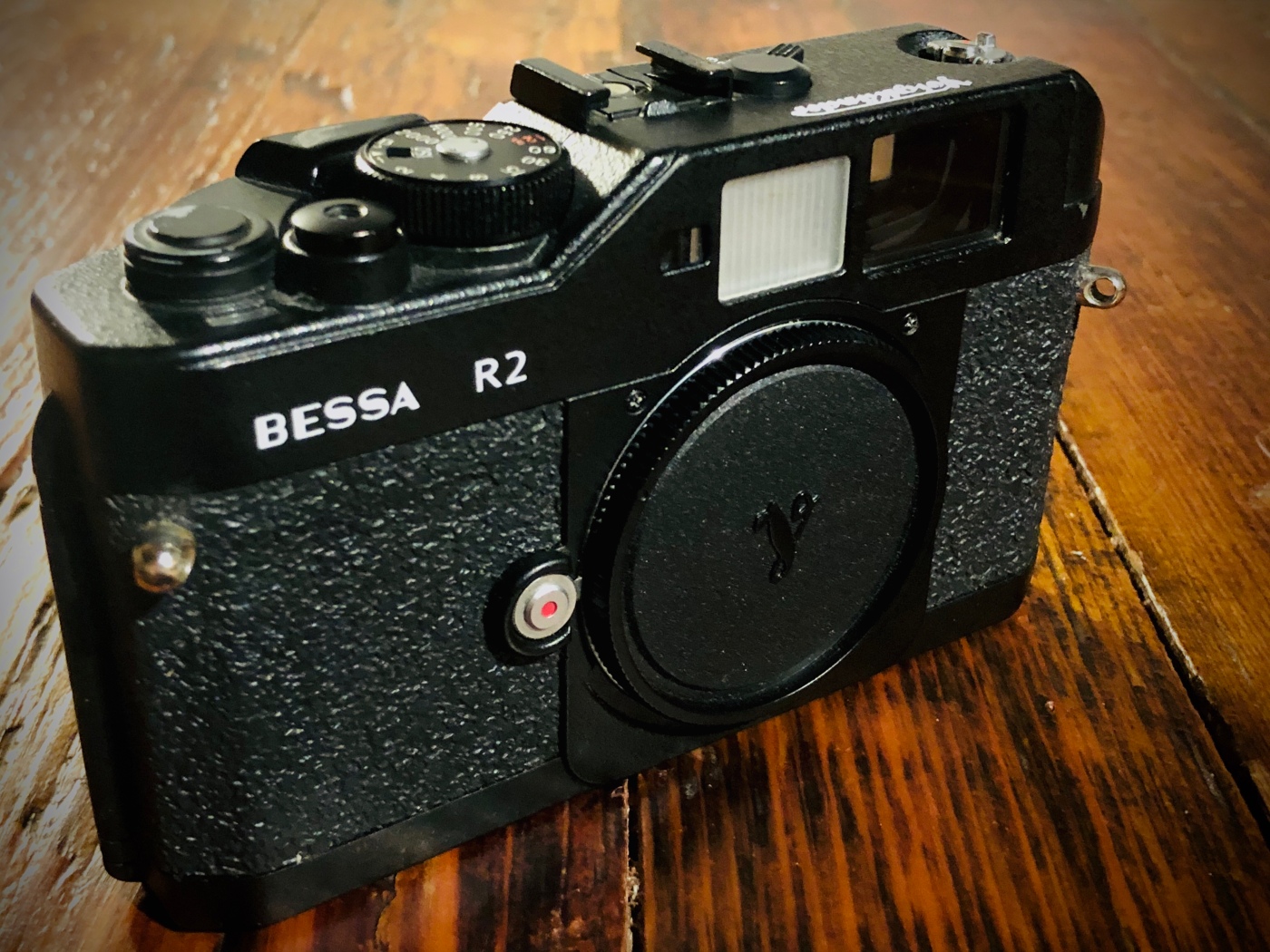

Too true. I’ve had an R2 for just about as long and it doesn’t get much use. Within the past six months, I did get an R4M, trading another camera for it. The R4, and I suspect the R3, is much more similar to the ZI than it is the R2. It maintains many of the R2’s best features, including a selectable set of frame lines, with the larger eyepiece of the ZI. It also feels a bit more substantial and the shutter is quieter. An ideal Voightlander set for me would be the R4 and an R3M.
BTW, I have never had the shutter lock up the way yours does, but I have had uneven frame spacing using the T winder. I’ve learned to wait just a second after taking a shot and then using the T winder. The T winder has another advantage – it makes the camera easier for me to hold.
I will keep, and occasionally use, the R2 and maybe someday supplement it with an R3, but I already have more film cameras than I can use regularly. I enjoy your writing; thanks for sharing.
LikeLiked by 1 person
Thanks for your comments, Jim. That’s interesting, the comparison of the newer Bessa’s to the ZI and it makes sense. I keep eyeing those bodies up but the purchase doesn’t make any practical sense for me. And yes, now that you mention it, I have also seen that the T-Winder can results in uneven frame registration. That hasn’t been a bother for me but is more evidence of the lack of accuracy in the system. Hope you continue to enjoy your Voigts!
LikeLike